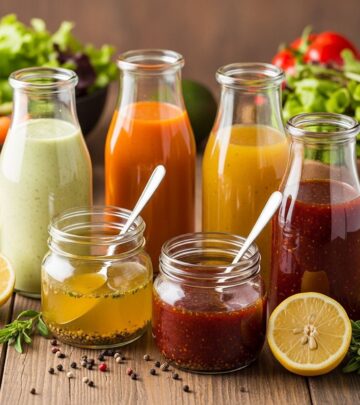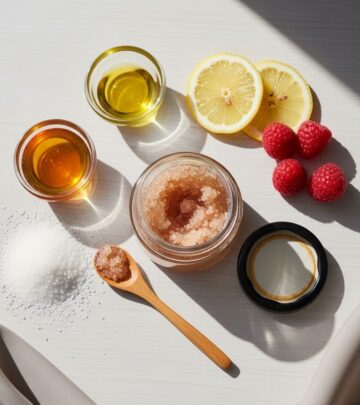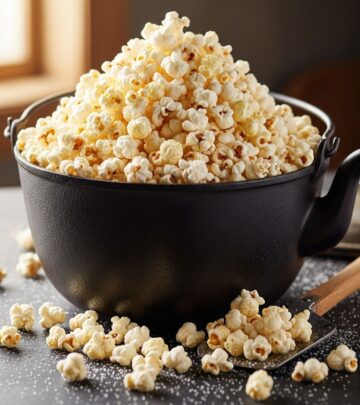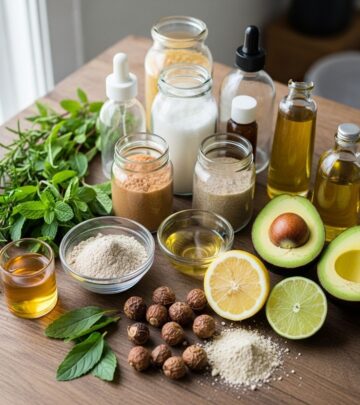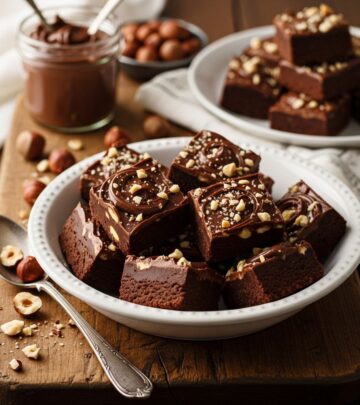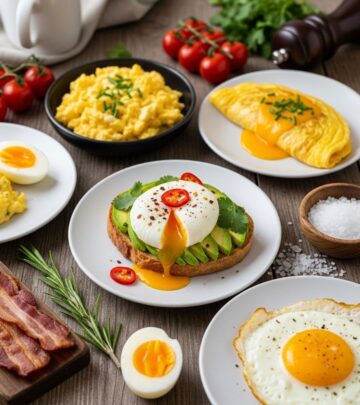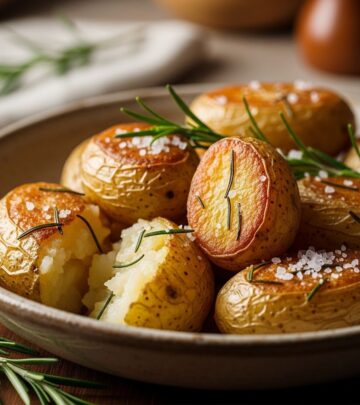The Ultimate Guide to Perfect Oven-Baked Potatoes
Minimal prep yields a pillowy center surrounded by a golden shell ready for any topping.
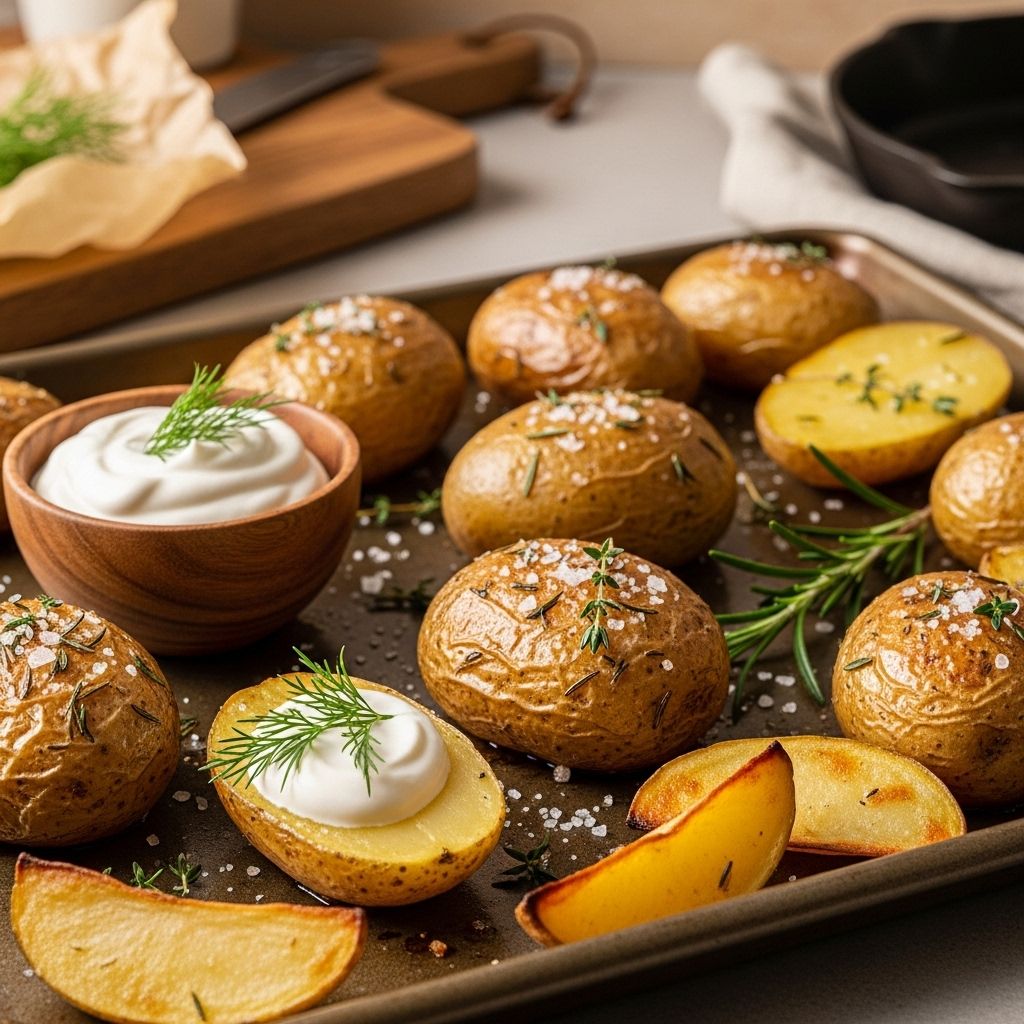
Image: HearthJunction Design Team
How to Bake a Potato in the Oven
There’s nothing quite like the simplicity and comfort of a perfect oven-baked potato. With a crispy, salty skin and fluffy, tender interior, it’s one of the most satisfying side dishes—or even main courses—out there. Whether you love it classic with just butter and salt or loaded with all the fixings, mastering the art of baking potatoes at home is easier than you think. This comprehensive guide covers everything you need to know to bake potatoes that are crispy outside and cloud-soft inside, complete with tips, topping ideas, troubleshooting, and answers to your most common questions.
What Makes the Ideal Baked Potato?
A great baked potato offers a satisfying contrast: a well-seasoned, crispy exterior and a perfectly fluffy interior. Achieving this is easier than many think, requiring just a few key steps and best practices. Let’s break it down step by step.
Choosing the Right Potato
The choice of potato matters if you want that classic, fluffy result. For true baked potato perfection, stick to:
- Russet potatoes (Idaho potatoes): These have a high starch content and thick skins, which crisp up well and produce a fluffy interior after baking.
- Avoid waxy varieties: Potatoes like Yukon Gold or Red Bliss are delicious for roasting or mashing, but they don’t yield the same fluffy imside when baked whole.
When shopping, pick potatoes that are firm, medium-to-large in size, and free of blemishes, green spots, or sprouts.
How to Prep Potatoes for Baking
Proper preparation is the first step towards an excellent baked potato:
- Wash and scrub: Thoroughly scrub the potato skin to remove dirt. Dry well to help the skins crisp up later.
- Prick with a fork: Use a fork to poke several holes around each potato. This allows steam to escape during baking, preventing bursts or sogginess.
- Oil, then salt: For the ultimate crispness, rub potatoes all over with a little extra-virgin olive oil. Sprinkle generously with coarse kosher salt.
Ingredients & Equipment
| Ingredient | Amount | Notes |
|---|---|---|
| Russet potatoes | 1 per person | Medium-large, scrubbed clean |
| Olive oil | 1-2 tsp per potato | For rubbing the skins |
| Kosher salt | To taste | Coarse; for the skin |
| Freshly ground black pepper | Optional | To taste, for serving |
- Baking sheet: Line with parchment for easy cleanup; a wire rack is optional if you want 360º crispness.
- Fork and knife
- Oven
Step-By-Step: How to Bake Potatoes in the Oven
- Preheat your oven: Set the oven to 425°F (220°C). High heat is crucial for crisp skins.
- Prep the potatoes: Scrub, dry, prick, oil, and salt them as described above.
- Bake directly on the rack or on a sheet: Place potatoes directly on the oven rack (with a sheet underneath to catch drips) or on a parchment-lined baking sheet. Spacing them out helps even cooking.
- Bake until tender: Bake for 45-60 minutes, turning potatoes once halfway through for even crisping. Potatoes are done when the skin is crisp and a fork slides easily into the center.
- Split and serve: Remove from oven. Use a sharp knife to cut a long slit down the center. Use both hands to gently squeeze the ends towards each other—this will fluff the interior.
- Add toppings and enjoy!
Oven Temperatures and Baking Times
| Oven Temp °F (°C) | Approx. Time |
|---|---|
| 425 (220) | 45–60 minutes (standard recommendation) |
| 400 (205) | 60–75 minutes |
| 375 (190) | 75–90 minutes |
- For extra-large potatoes, add 10–15 minutes to the bake time.
- If you’re short on time, you can microwave the potatoes for 5–8 minutes to jump-start cooking, then transfer to the oven to finish for 30 minutes, but the skin will not be quite as crisp.
Topping Ideas: Classic to Creative
Baked potatoes are a perfect canvas for toppings. Here are some favorite combos:
- Classic: Butter, sour cream, chives/scallions, and shredded cheddar cheese.
- Loaded: Butter, sour cream, crispy bacon, scallions, shredded cheddar, black pepper.
- Vegetarian: Sautéed mushrooms, broccoli florets, and shredded parmesan.
- Tex-Mex: Salsa, black beans, corn, jalapeños, avocado, and pepper jack cheese.
- Greek: Crumbled feta, diced tomatoes, olives, and tzatziki.
- Buffalo: Shredded chicken, buffalo sauce, blue cheese, and celery.
For a fancier meal, try topping with roasted vegetables, chili, or pulled pork. The options are nearly endless!
Tips and Troubleshooting
- Why prick the potatoes? To let steam escape during baking—otherwise, pressure can build up and cause the potato to burst.
- How do you know when a baked potato is done? Insert a fork or skewer into the thickest part; it should glide in without resistance.
- Crispy skin trick: Avoid wrapping potatoes in foil, which traps steam and makes the skin soft. If you love softer skins, foil is fine; crisp lovers should bake unwrapped.
- If baking ahead: Re-crisp potatoes in a hot oven (400°F) for 10–15 minutes before serving. Don’t store baked potatoes in foil at room temp for food safety reasons.
How to Serve and Store
Open up the freshly baked potato, fluff the inside lightly with a fork, and add butter right away so it melts in. Set out a “potato bar” for everyone to customize their toppings at the table, or serve as a hearty side dish to steak, chicken, or a salad.
- Leftovers: Store split, cooled potatoes in an airtight container in the fridge for up to 3 days.
- To reheat: Place in a 400°F oven for 15–20 minutes; microwaving works in a pinch but may soften the skin.
- Freeze: Baked potatoes can be wrapped tightly and frozen for 2–3 months. Thaw and reheat in the oven for best results.
Delicious Variations: Beyond the Basics
Baked potatoes are a blank canvas. Try these fun ideas for something new:
- Hasselback potatoes: Make thin slices partway through the potato, brush with garlic butter, then bake for crispy, accordion-style spuds.
- Twice-baked potatoes: Scoop out baked potato flesh, mix with cheese, bacon, or veggies, refill skins, and bake again for extra decadence.
- Baked sweet potatoes: Use the same method with sweet potatoes for a rich, earthy alternative. Top with butter, maple syrup, and pecans, or go savory.
Frequently Asked Questions
What’s the best type of potato for baking?
Russet potatoes are the gold standard for fluffy baked potatoes because of their high starch content and thick skins.
Should I wrap potatoes in foil before baking?
Wrapping in foil softens the skin, which some people prefer, but for crispy, crackling skin, always bake them unwrapped. Foil can also trap moisture and affect texture.
Can you bake potatoes ahead of time?
Yes! Bake as usual, let cool completely, then store in the fridge. Reheat in a hot oven to crisp up the skin again before serving.
Do I have to oil and salt the potatoes?
Oiling is key for crispy skin and for making the salt stick. If you skip oiling, the skin may end up leathery and bland.
How do you avoid overbaking potatoes?
Start checking at 45 minutes by piercing with a fork. If it slides in easily, they’re done. Overbaked potatoes can dry out, so be vigilant with timing.
Is it safe to store baked potatoes wrapped in foil?
No. Storing foil-wrapped baked potatoes at room temperature creates an anaerobic environment where bacteria, including botulism, can thrive. Always remove foil before storing and refrigerate promptly.
Pro Tips for Potato Perfection
- For fluffier insides: After baking, quickly slit the top and squeeze the ends to allow steam to escape. This keeps the inside fluffy.
- Add flavor with infused oils: Brush potatoes with garlic- or herb-infused olive oil before baking for an extra boost of flavor.
- Batch baking: Potatoes can be baked in batches and reheated for quick meal prep all week.
Conclusion
Baking a potato in the oven is a classic kitchen skill every cook should know. With a few simple steps—scrubbing, oiling, salting, and baking at the right temperature—you can enjoy potatoes that are perfectly crisp on the outside and fluffy inside. Whether you crave traditional, loaded, or creative toppings, a baked potato makes the perfect vehicle for flavor and comfort any night of the week.
Potato Bar Inspiration
Set up a “baked potato bar” for family dinners or parties by offering a variety of toppings:
- Butter
- Sour cream
- Shredded cheeses: cheddar, pepper jack, parmesan
- Green onions, chives, or scallions
- Crispy bacon bits or ham
- Steamed broccoli or roasted vegetables
- Chili or salsa
- Hot sauce or jalapeños
- Avocado or guacamole
Nutritional Information
| Nutrient | Per Medium Potato* |
|---|---|
| Calories | 160 |
| Carbs | 37g |
| Protein | 4g |
| Fat | 0g (without toppings) |
| Fiber | 4g |
| Vitamin C | 28% DV |
*Nutrition info does not include toppings.
Quick Recap: Oven-Baked Potato Instructions
- Preheat oven to 425°F (220°C).
- Scrub russet potatoes clean, dry, and prick all over with a fork.
- Rub with olive oil and sprinkle with kosher salt.
- Bake directly on oven rack or sheet for 45-60 minutes, turning once, until crispy-skinned and fork-tender.
- Split open, fluff, top, and serve hot!
FAQs About Baked Potatoes
Q: Can I bake more than one potato at once?
A: Yes. Arrange potatoes so air can circulate around each. Larger batches may require a bit longer in the oven.
Q: What if I only have Yukon Gold potatoes?
A: You can bake them, but the texture will be more creamy than fluffy, and the skin will be thinner.
Q: Can I start potatoes in the microwave and finish in the oven?
A: Absolutely. Microwave each cleaned, pricked potato for 5-8 minutes, then move to the oven (oiled and salted) to crisp up the skin for 20-30 minutes at 425°F.
Q: Why did my potato turn out gummy?
A: Gummy potatoes are usually the result of low oven temperature or underbaking. Stick to high heat and check with a fork for doneness.
References
- https://www.youtube.com/watch?v=lXpYMyxZnoE
- https://www.dishingdelish.com/baked-potato-slices/
- https://www.delish.com/cooking/recipe-ideas/a43853/loaded-baked-potatoes-bacon-cheddar-recipe/
- https://www.delishknowledge.com/easy-oven-roasted-potatoes/
- https://www.delish.com/cooking/recipe-ideas/a22865719/herb-roasted-potatoes-recipe/
Read full bio of Anjali Sayee

